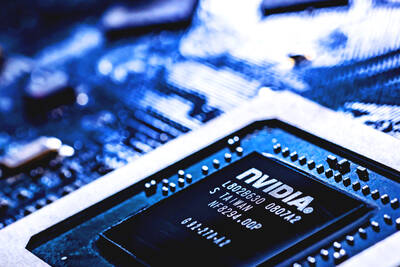It's a story some Wall Streeters say should be titled: "The stock market picture in the rear-view mirror was tremendous but there are more great times ahead for investors."
The market was again dangerous this past week as stocks twisted and turned after last month's selloff. To some people, it looked like the start of a nuclear-winter bear market as the Dow Jones industrial average plummeted by a scary 1,000 points, or nearly 10 percent, from its Aug. 25 high of 11,326.04.
But the brave ones held on tight, confident the bull market is still alive and that things were still hunky-dory.
One expert forecast stocks will continue to make investors rich for another nine years, but then watch out after that.
"Thirty-five thousand to 41,000 is our target for the Dow by the year 2008," said Harry Dent Jr, author of the just released book The Roaring 2000s Investor, Strategies For The Life You Want, (Simon & Schuster US$26).
Outrageous? Not really.
"The rise in the market nine years out will be driven by this massive Baby Boom generation -- the largest group of new workers in history," he said in an interview.
Dent, a "just the facts ma'am" kind of guy, said the fuel behind the advance will be two predictable forces: an unprecedented technological revolution coupled with the Boomers reaching their peak spending years before the year 2008.
It's a no brainer. The demographic numbers are in the annual consumer expenditure surveys issued by the Bureau of Labor.
"Statistics show the average person enters the workforce by the age of 19 or 20, goes into an earnings-career-family cycle," said Dent. "They raise kids, buy houses, cars and computers then when their children leave the nest, the average person spends less for the rest of their lives."
The "Bob Hope" generation led to an economic boom in the '40s and the great times lasted until the group reached a peak in their spending cycle and it brought the economy into recession in the '70s and '80s, he said.
Then, came the awesome Baby Boomers -- those born between 1946 and 1964 -- and the stock market blasted off again like a moonshot.
The Boomers will generate the biggest economic boom ever before they reach retirement and reset their financial goals.
"The birth index and spending of the average US family track the stock market unbelievably closely," Dent said.
The author said all indications are the economy and stocks will stay bullish until around 2008.
"After that, the market will head lower," he said.
By the year 2008, the Boomers' spending power will have run its course and that will lead to an economic downturn and, unfortunately, a bear market, Dent said. Typically bear markets can last for 12 to 14 years.
"It all comes down to understanding long-term trends," he said.
The bad news, though, is the Boomers will reach their most important pre-retirement years of investment accumulation when stocks will be sliding after 2009. Dent estimated the bear market could last until 2022 or 2023.
"That means people's retirement money could be more threatened by that downturn than by the failure to save in the past or the bankruptcy of Social Security," he said.
Some analysts have been saying the market will be in trouble when the Boomers, who have played a big role in the market's spectacular rise, start to sell their stock holdings as they reach retirement age.
They said there's a bigger risk than ever of a major market shakeout. During the market's last headlong tumble in 1987, people had US$180 billion invested in 1,000 mutual funds. Now, there's an eye-popping US$3.3 trillion invested in 7,000 funds.
Also, 25 percent of the average US household has a stake in the stock market compared with just 10 percent in 1987.
For the time being, cash is still flowing into stock mutual funds. Investors pumped US$9.21 billion into the funds in August, bringing the total for the first eight months of the year to US$112.0 billion. At the same time last year, more than US$132.0 billion went into the funds.
One fund tracker said the Boomers' stock trading will be missed but it won't mean the end of the market. The next generation will take care of Wall Street.
"As investors aged, they have continued to reallocate their assets at a relatively slow transitional pace and the group that will follow the Baby Boomers -- the Baby Busters -- will be substantially larger," said Dallas Salisbury, president of the Employee Benefit Research Institute.
"That generation will be even more aggressive in the 401(K) plans that will be allocated to equities," he said.
EBRI, which follows more than 27,700 self-directed 401(K) retirement plans, said the older people get, the more reluctant they are to hold big positions in stocks.
The firm's research found that individuals in their twenties are almost 80 percent invested in stocks and the total drops to 75 percent by the time they reach their thirties. It slides further to 50 percent as people in their sixties approach retirement age.
The first of 76 million Boomers are set to turn 55 in 2001, according to the National Center for Health Statistics.
"There will be some ups and downs in the investment flows but you are not going to get a sudden jolt," Salisbury said.
"The only way there could be a huge shock to the market is if people kept 80 percent of their money in stocks until they retired and the next day, suddenly cut their allocation to 40 percent stocks," he said.
Don't worry too much about the market. Stocks have faced even worse uncertainties in the past and they've always survived.
Gail Fosler, chief economist for the Conference Board, said that bullish investors have the stock market's history on their sides.
The proof: The Dow is up an incredible 1,350 percent from its August 1972 low of 777.
"Sizeable market corrections are rare events," she said.
Over the last 128 years, the market has slumped 20 percent or more in a year only 10 times. But more significantly, these bone-jarring plunges have happened just once since 1950.
The last big correction was in 1974-75 as an oil price shock triggered a market meltdown of 43 percent.

When Lika Megreladze was a child, life in her native western Georgian region of Guria revolved around tea. Her mother worked for decades as a scientist at the Soviet Union’s Institute of Tea and Subtropical Crops in the village of Anaseuli, Georgia, perfecting cultivation methods for a Georgian tea industry that supplied the bulk of the vast communist state’s brews. “When I was a child, this was only my mum’s workplace. Only later I realized that it was something big,” she said. Now, the institute lies abandoned. Yellowed papers are strewn around its decaying corridors, and a statue of Soviet founder Vladimir Lenin

UNIFYING OPPOSITION: Numerous companies have registered complaints over the potential levies, bringing together rival automakers in voicing their reservations US President Donald Trump is readying plans for industry-specific tariffs to kick in alongside his country-by-country duties in two weeks, ramping up his push to reshape the US’ standing in the global trading system by penalizing purchases from abroad. Administration officials could release details of Trump’s planned 50 percent duty on copper in the days before they are set to take effect on Friday next week, a person familiar with the matter said. That is the same date Trump’s “reciprocal” levies on products from more than 100 nations are slated to begin. Trump on Tuesday said that he is likely to impose tariffs

HELPING HAND: Approving the sale of H20s could give China the edge it needs to capture market share and become the global standard, a US representative said The US President Donald Trump administration’s decision allowing Nvidia Corp to resume shipments of its H20 artificial intelligence (AI) chips to China risks bolstering Beijing’s military capabilities and expanding its capacity to compete with the US, the head of the US House Select Committee on Strategic Competition Between the United States and the Chinese Communist Party said. “The H20, which is a cost-effective and powerful AI inference chip, far surpasses China’s indigenous capability and would therefore provide a substantial increase to China’s AI development,” committee chairman John Moolenaar, a Michigan Republican, said on Friday in a letter to US Secretary of

Taiwan Semiconductor Manufacturing Co’s (TSMC, 台積電) market value closed above US$1 trillion for the first time in Taipei last week, with a raised sales forecast driven by robust artificial intelligence (AI) demand. TSMC saw its Taiwanese shares climb to a record high on Friday, a near 50 percent rise from an April low. That has made it the first Asian stock worth more than US$1 trillion, since PetroChina Co (中國石油天然氣) briefly reached the milestone in 2007. As investors turned calm after their aggressive buying on Friday, amid optimism over the chipmaker’s business outlook, TSMC lost 0.43 percent to close at NT$1,150